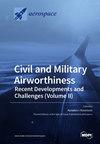应用于小行星近距离相遇的飞越方法评估
IF 2.1
3区 工程技术
Q2 ENGINEERING, AEROSPACE
引用次数: 0
摘要
对航天器飞行任务的轨道飞越进行了广泛的研究,形成了有效的数学和物理模型。然而,这些模型对涉及小行星的自然遭遇的适用性尚未得到探讨。本文研究了两种此类理论--补间圆锥(PC)和开普勒图(KM)--对小行星遭遇的适用性。本文将对这两种方法进行回顾,重点介绍它们的假设条件和适用范围。然后将对小行星与小行星相遇进行模拟,以评估这两种方法在这些情况下的有效性。模拟参数是通过收集实际小行星与天体相遇的数据来设定的。与用于建立飞越理论的数据相比,这些数据通常具有近距离大、扰动天体质量小的特点。结果表明,PC 理论的有效性随着接近距离的增加而减弱,这与其假设相符。此外,在飞越对轨道能量变化有重大影响的几何构型中,该模型的预测效果更好。KM 理论对发生在扰动天体影响范围之外的相遇显示出良好的有效性,即使是在很远的距离上。这项研究探讨了小行星遭遇时飞越模型的优缺点,提供了实用见解和未来方向。本文章由计算机程序翻译,如有差异,请以英文原文为准。
Assessment of Flyby Methods as Applied to Close Encounters among Asteroids
Orbital flybys have been extensively studied for spacecraft missions, resulting in effective mathematical and physical models. However, these models’ applicability to natural encounters involving asteroids has not been explored. This paper examines the applicability of two such theories, patched conics (PC) and the Keplerian map (KM), to asteroid encounters. A review of the two methods will be provided, highlighting their assumptions and range of applicability. Simulations of asteroid–asteroid encounters will then be performed to evaluate their effectiveness in these scenarios. The simulation parameters are set by collecting data on actual asteroid–asteroid encounters, hereby presented, generally characterised by high close approach distances and small masses of the perturbing bodies, if compared to those used to build the flyby theories. Results show that the PC theory’s effectiveness diminishes with increasing approach distances, aligning with its assumptions. Moreover, the prediction of the model is better in the geometric configurations where the flyby has major effects on the orbital energy change. The KM theory has shown good effectiveness for encounters occurring outside the sphere of influence of the perturbing body, even for very high distances. This research investigates flyby models’ strengths and weaknesses in asteroid encounters, offering practical insights and future directions.
求助全文
通过发布文献求助,成功后即可免费获取论文全文。
去求助
来源期刊

Aerospace
ENGINEERING, AEROSPACE-
CiteScore
3.40
自引率
23.10%
发文量
661
审稿时长
6 weeks
期刊介绍:
Aerospace is a multidisciplinary science inviting submissions on, but not limited to, the following subject areas: aerodynamics computational fluid dynamics fluid-structure interaction flight mechanics plasmas research instrumentation test facilities environment material science structural analysis thermophysics and heat transfer thermal-structure interaction aeroacoustics optics electromagnetism and radar propulsion power generation and conversion fuels and propellants combustion multidisciplinary design optimization software engineering data analysis signal and image processing artificial intelligence aerospace vehicles'' operation, control and maintenance risk and reliability human factors human-automation interaction airline operations and management air traffic management airport design meteorology space exploration multi-physics interaction.
 求助内容:
求助内容: 应助结果提醒方式:
应助结果提醒方式:


